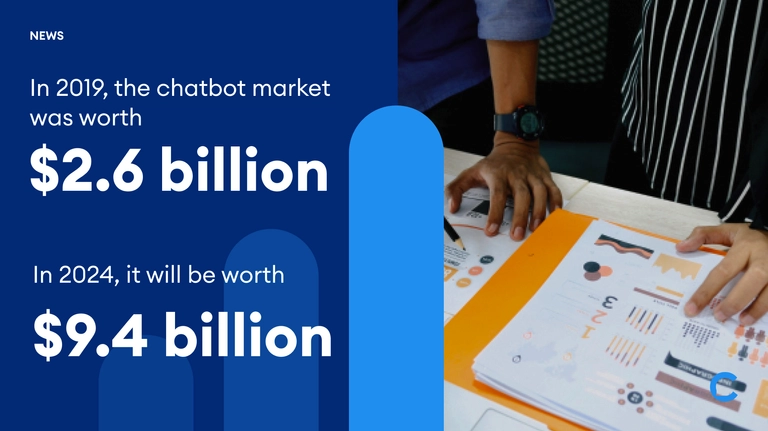
The future of chatbots for business, based on data from 41,000 companies
We analyzed data from 41,000 brands that use chatbots to identify trends and predict the future of bots for business in 2021.
Today, more businesses are using chatbots than ever. The market was already worth $2.6 billion in 2019, and it’s expected to reach $9.4 billion by 2024. At first, chatbots could answer only the most basic questions asked by users. But the development of AI and the improvement of chatbot-building software now enables them to answer more complex questions and provide a high-quality customer experience.
In addition to answering FAQs, chatbots can now also automate lead generation, sell products, gather feedback, and more. To get a clearer picture of how chatbots are used by businesses today, we analyzed data from over 41,000 brands that currently use them. Here are the key takeaways, and what each one means for chatbot adoption in 2021 and beyond.
The US is still the leader in chatbot adoption
Over 70% of brands that use chatbots are based in one of the nine countries shown on the graph below. As you can see, the United States is home to the majority of brands that use chatbots (65%). The US also had the second-fastest growth rate in chatbot adoption between 2018–2020. This upward trend strongly suggests that consumers are responding well to chatbots, and that these bots are positively impacting the bottom line of adoptive companies. Other data also supports this: Research from Salesforce shows that half of all Americans engage with a chatbot at least once a week.
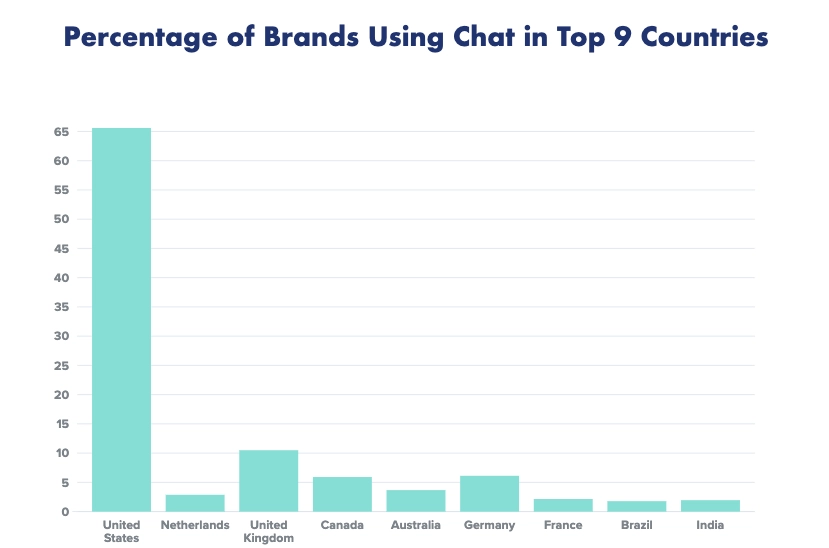
But it’s not just the United States that’s experiencing growth in chatbot adoption. European countries also continue to trend upward in bot usage. Every European country listed in the top nine experienced growth in this area between 2018 and 2020. In particular, Germany experienced the fastest growth of the countries in the study, with an increase of chatbot usage by 1.44% per 1,000 people. Consumer surveys across Europe reflect similar results, with about 50% of European consumers reporting that they view chatbots as a positive addition to business and customer service.
Of all the countries in the top nine, India and Australia were the only ones that experienced a slight decline in chatbot usage. However, the decrease was only by a small percentage, it may well be a result of the general economic decline caused by COVID-19.
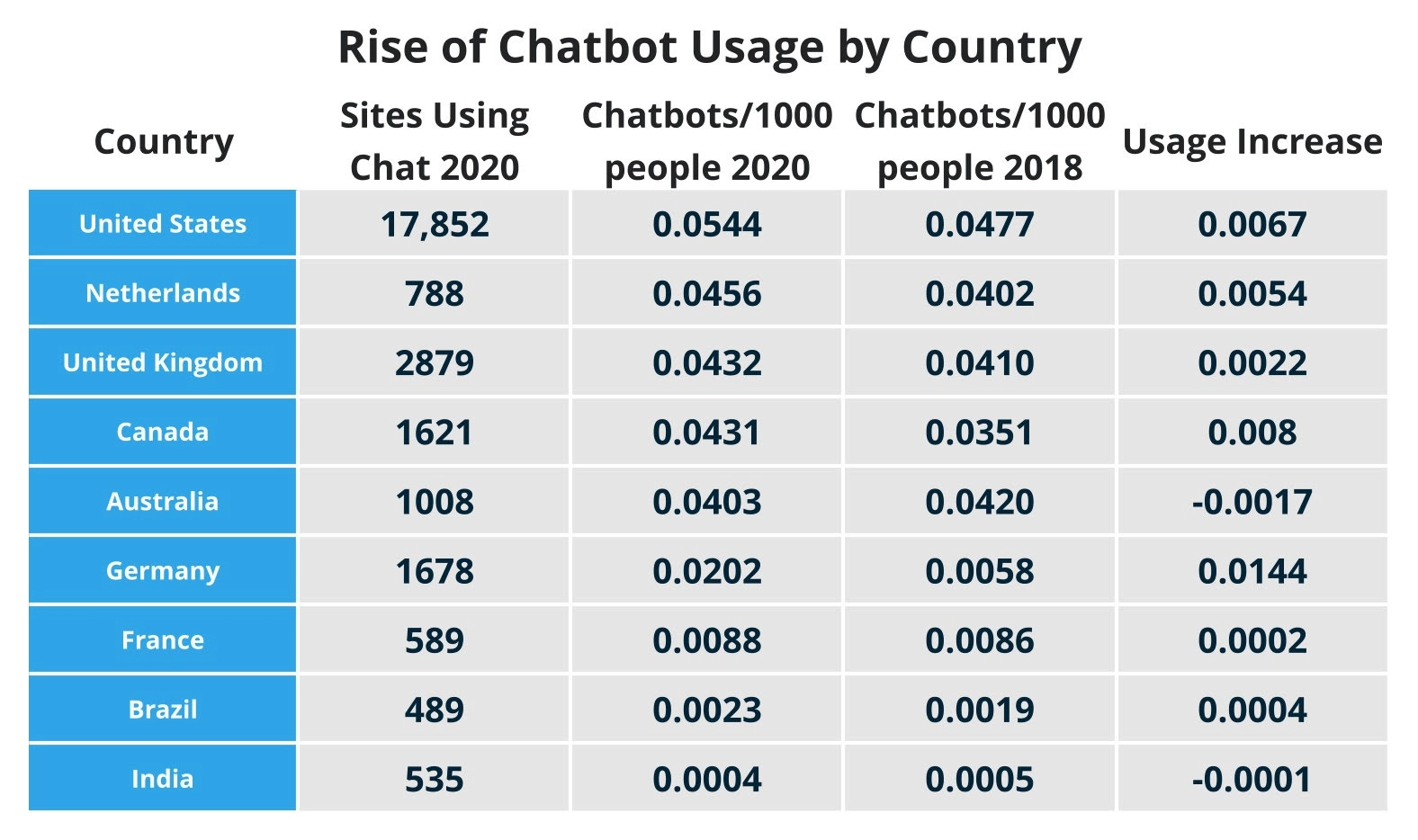
What this means for the future?
Chatbots are versatile tools that are becoming popular with consumers in major markets around the world.
Chatbots are becoming more popular for B2C companies
Chatbots have become increasingly popular for B2C companies in recent years. In 2020, about 60% of brands using chatbots are B2C brands—and data shows that B2C consumers are embracing the technology. For example: A study by Hubspot found that 47% of consumers say they’d be open to making a purchase through a bot.
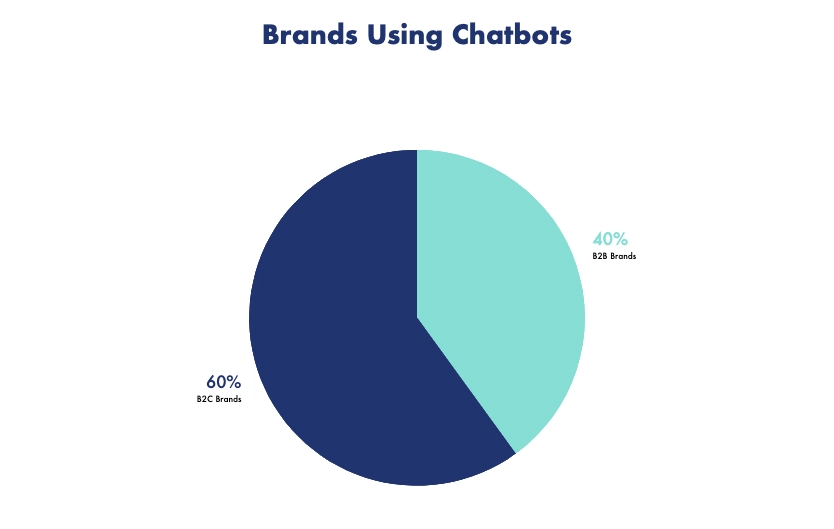
One B2C industry in which bots have become increasingly popular is banking. A 2018 survey found that 43% of respondents prefer to address any issue they may have with their bank through a chatbot. This willingness to turn to bots is projected to save banks up to $8 billion annually by 2022.
Ecommerce is another sector where chatbots are exploding in popularity. One widely cited major brand that adopted bot technology early was Sephora. They built a chatbot to assist with marketing and sales, and it’s been highly successful. Users who begin a chat with the Sephora bot average about 10 messages per day. The bot gives makeup advice, shares how-to videos, and even allows consumers to book appointments for in-store services.
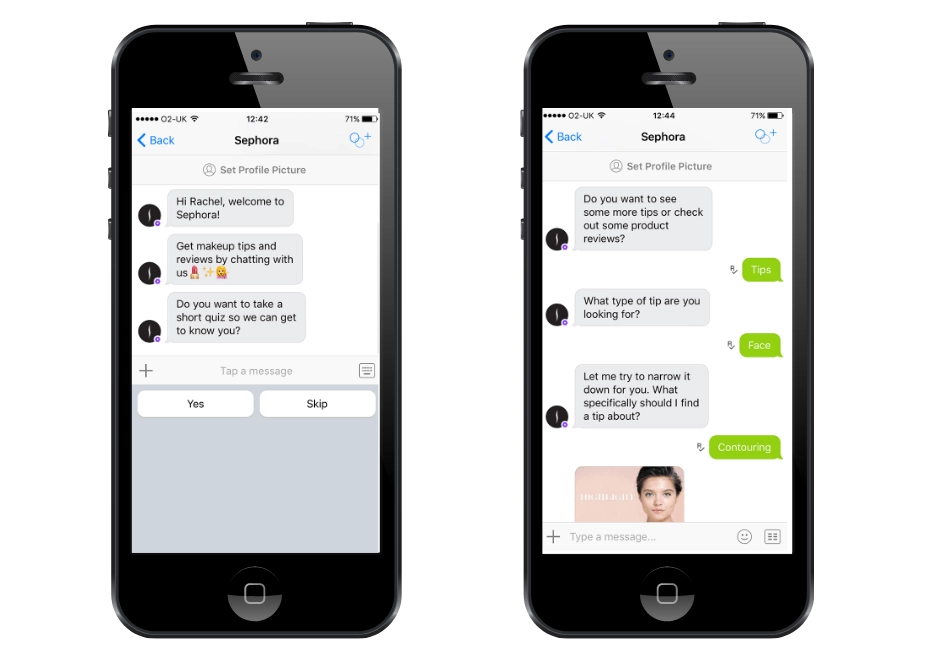
For more ecommerce chatbot examples, check out the stories of how
A whisky brand used a bot to triple online conversion rates.
An agency got a 999% return on ad spend for their car accessories customer.
A furniture brand uses a bot to generate 80% of their sales.
However, just because B2C brands are now overtaking B2B brands in chatbot adoption doesn’t mean that B2B brands no longer use bots. About 40% of the 41,000 brands in our analysis that use chatbots are B2B. It’s more likely that the growth rate of chatbot usage in B2C brands has surpassed that of B2B brands, rather than bot adoption declining for B2B.
There are also plenty of interesting case studies detailing how B2B brands use chatbots. Hubspot is one great example of a B2B company using bots to drive sales and increase lead volume. Their bot finds out where users are in the funnel, and then sends them to a free tool to solve whatever issue they’re facing. This tactic adds value, increases brand authority and trust, and can actually upsell the user from the free plan to a paid plan. The best part: It’s all done by the bot on autopilot—no human intervention required.
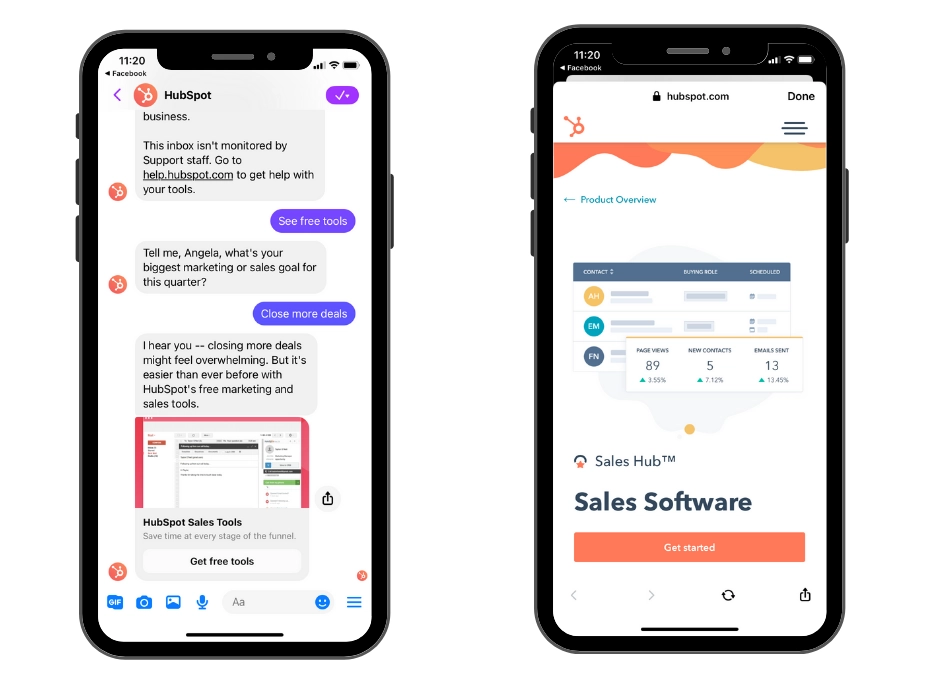
What this means for the future?
Chatbots clearly provide both B2B and B2C companies with plenty of opportunities to engage customers, automate support, increase sales and more. Expect to see even more brands of both types adopting bots in 2021.
IT software is the leading industry for chatbot adoption
While chatbots are being adopted by businesses across more and more industries, 38.9% of bot-using brands in our analysis are part of the IT software and services sector. It may seem unsurprising, since businesses in this industry are obviously tech-savvy. But in fact, technological know-how is no longer a requirement for building effective chatbots. No-code software like Chatfuel empowers anyone to build a bot—no coding knowledge or experience necessary.
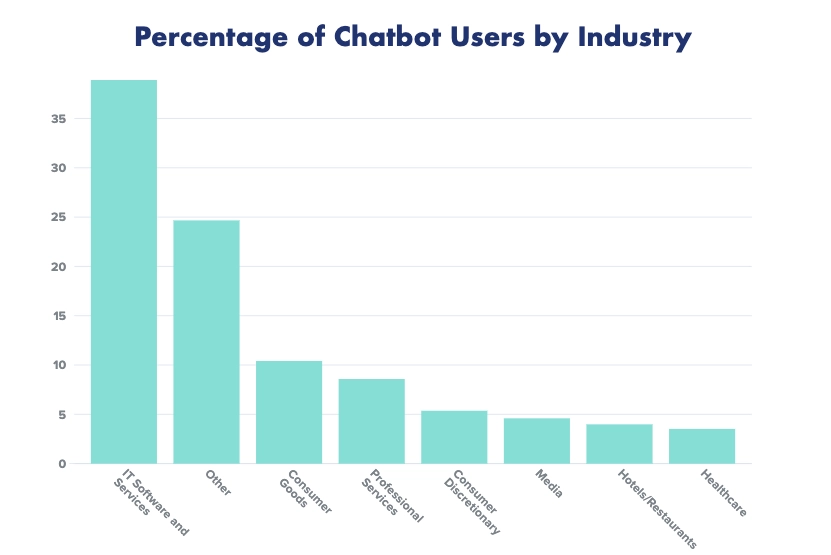
At almost 25%, the Other category is the second largest in our findings, which indicates that chatbots are being adopted across a range of industries. The Consumer Goods category was the third-largest chatbot adopter at 10.4%, followed by Professional Services (8.6%), Consumer Discretionary (5.4%), Media (4.6%), Restaurants and Hotels (3.98%), and Healthcare (3.52%).
What this means for the future?
The industries in which chatbots are used will continue to diversify because of how easy it has become to build effective, fully functional bots.
Smaller companies are more likely to use chatbots
Chatbots are actually the most popular among companies with between one and 10 employees. This may be because a smaller company has to find innovative ways to handle customer service and sales leads with fewer resources.
To learn more about how chatbots can help companies save time and resources, check out these case studies:
A nonprofit chatbot saves the organization hours of time each week.
An ecommerce chatbot continues to bring in revenue on autopilot, even when the business owner is on vacation.
A lead qualification chatbot enabled this call center business to save over $25,000/month in operational costs.
That doesn’t mean large companies aren’t interested in jumping on the bot bandwagon, however. A Gartner study predicts that by 2021, over 50% of enterprise companies (like Google, IBM, and Facebook) will spend more money each year on chatbots than mobile apps.
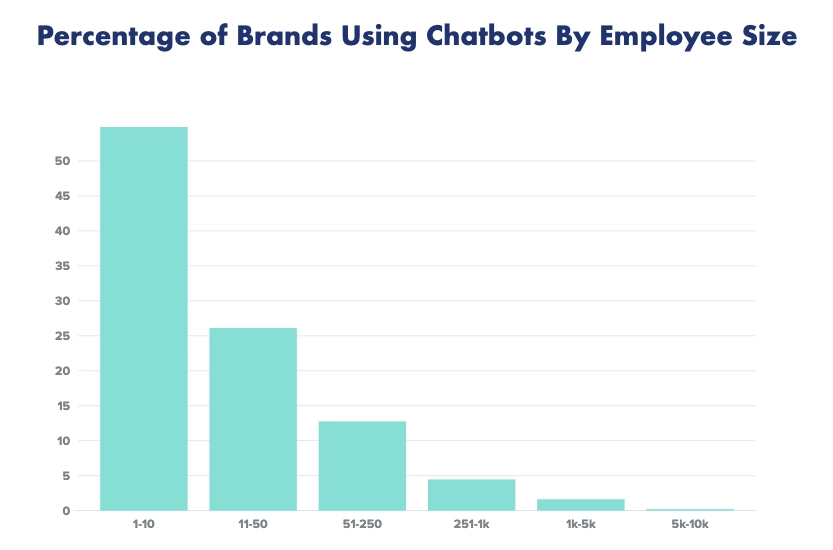
What this means for the future?
While chatbots can benefit businesses of all sizes, they’ll continue to be especially useful tools for entrepreneurs and smaller businesses, since the technology is cost-effective and accessible to anyone.
How effective are bots for brands and their customers?
Businesses are adopting chatbots at ever-increasing rates—but what do their customers think? Are bots actually helpful and effective? Can they provide positive results for both the users and the businesses? The answer is yes. Take a look at these telling stats:
56% of consumers already say they’d prefer to message a business rather than call customer support. And as more brands start building high-quality bots, this number will only increase.
The average open rate for email is around 21%. The average open rate for chatbot messages on Messenger is close to 80%. That means messages brands send via bot are getting seen.
Retention for chatbot users is between 30-50%, based on this data we analyzed from 41,000 bot-using brands. That means at least half of bot users come back for more.
Chatbots are growing in popularity among consumers, and brands are seeing the benefits. As a result, we can all expect the chatbot market to continue its rapid growth into 2021 and beyond.
Chatbots are here to stay
56% of consumers say they’d prefer to message a business rather than call customer support. And as more brands start building high-quality bots, this number will only increase. People are interested in interacting with chatbots. And since your brand can only benefit from a bot (save time, increase sales, automate processes), now’s the time to build one.
To get started, sign up for your free Chatfuel account today.
